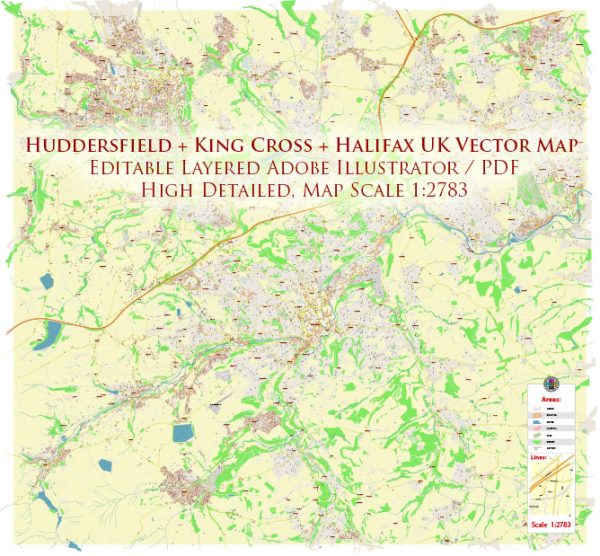The urban development history of Huddersfield, King Cross, and Halifax in the United Kingdom reflects the broader industrial and economic changes that took place during the 18th, 19th, and 20th centuries.
Huddersfield:
- Industrial Revolution Impact (18th-19th centuries):
- Huddersfield experienced significant growth during the Industrial Revolution. The town became a major center for textile production, particularly in woolen and worsted goods.
- The construction of mills and factories transformed the landscape, attracting a growing population to support the burgeoning industry.
- Canal and Rail Networks:
- The construction of the Huddersfield Narrow Canal in the late 18th century and later the arrival of the railway in the mid-19th century further facilitated industrial expansion.
- These transportation links allowed for easier movement of raw materials and finished goods, boosting trade and commerce.
- Architectural Heritage:
- Huddersfield boasts Victorian architecture, including grand industrial buildings, warehouses, and elegant public structures like the railway station.
- The town’s growth is evident in the Victorian and Edwardian housing stock that lines its streets.
King Cross:
- Textile Industry Influence:
- King Cross, like Huddersfield, was influenced by the textile industry. The area likely saw the establishment of mills and factories contributing to the regional textile production.
- Transportation Development:
- Proximity to transportation networks, including roads and potentially the railway, would have played a crucial role in the development of King Cross.
- Residential Expansion:
- As the industrial sector prospered, the demand for labor would have led to the expansion of residential areas in King Cross to accommodate the growing population of workers.
Halifax:
- Textile and Manufacturing Hub:
- Similar to Huddersfield, Halifax played a vital role in the textile industry. It was a significant center for woolen and worsted manufacture.
- Piece Hall:
- One of Halifax’s notable landmarks is the Piece Hall, a large cloth hall where merchants traded “pieces” of cloth. Built in the late 18th century, it reflects the importance of the textile trade in the town.
- Industrial Decline and Regeneration:
- In the 20th century, the textile industry faced decline, impacting Halifax’s economy. However, efforts at regeneration have seen the transformation of former industrial sites into residential and commercial spaces.
- Architectural Heritage:
- Halifax features a mix of historic architecture, including Victorian buildings and structures that tell the story of its industrial past.
In summary, the urban development of Huddersfield, King Cross, and Halifax is closely tied to the rise and decline of the textile industry, transportation infrastructure, and the societal changes brought about by the Industrial Revolution. These areas have evolved over time, adapting to economic shifts and undergoing regeneration efforts to meet the needs of contemporary communities.


 Author: Kirill Shrayber, Ph.D.
Author: Kirill Shrayber, Ph.D.